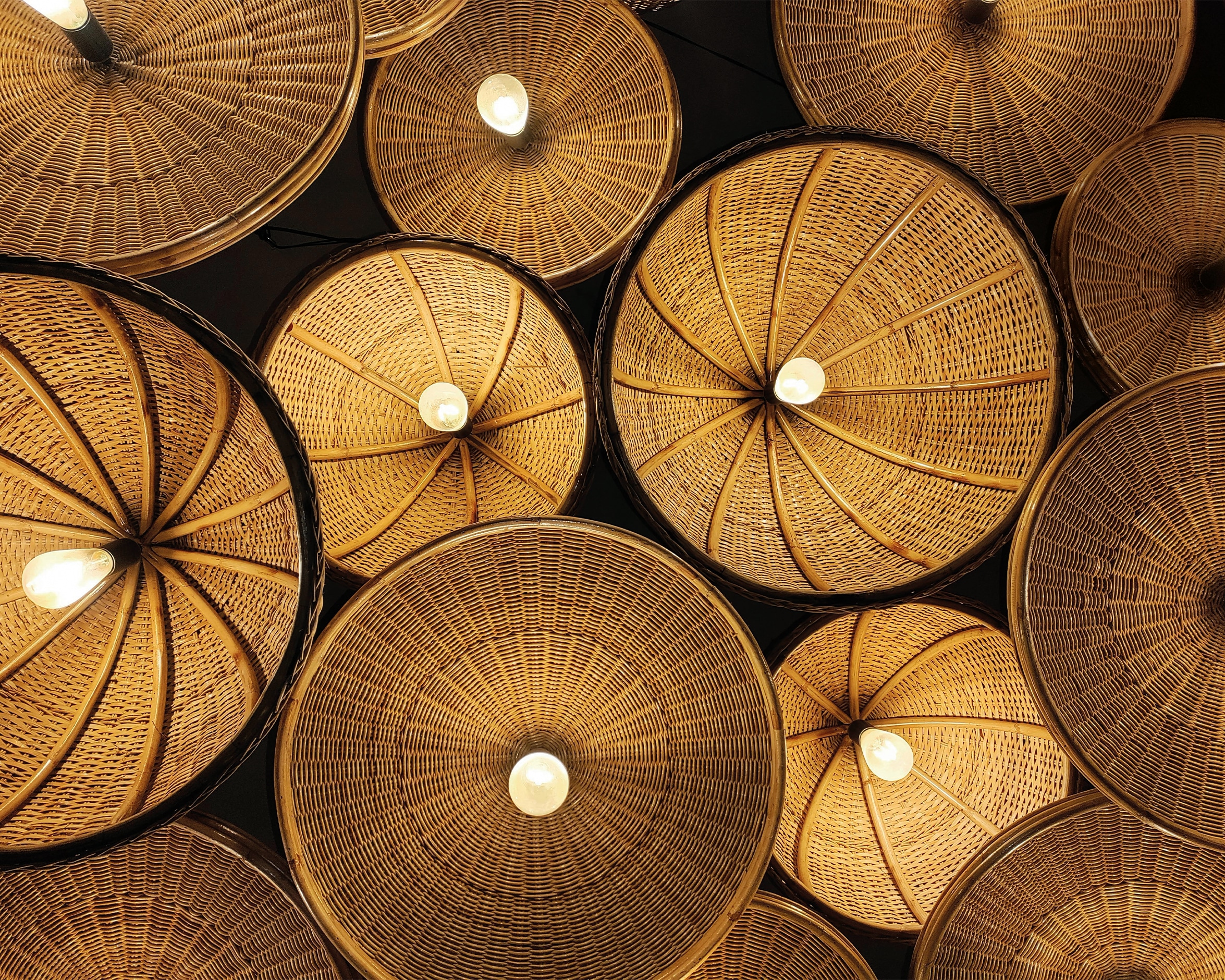Don’t neglect lighting in your home design. Beautiful illumination should be about form as well as function.
True to nature
All things handmade, locally produced and natural continue to reign supreme in decor. A beautiful object with soft lines and organic materials brings a sense of calm to a busy modern space. Think rattan (this timeless material will never be out of style), wicker, wood, shell and irregular hand-blown glass.
To take things a step further, opt for unusual nature-inspired designs such as branching chandeliers formed into tree limbs, delicate pendants made up of flower clusters or sconces shaped like palm leaves. The fitting can be made of metal or glass and needn’t look like a direct copy of nature, as long as it has an organic feel.
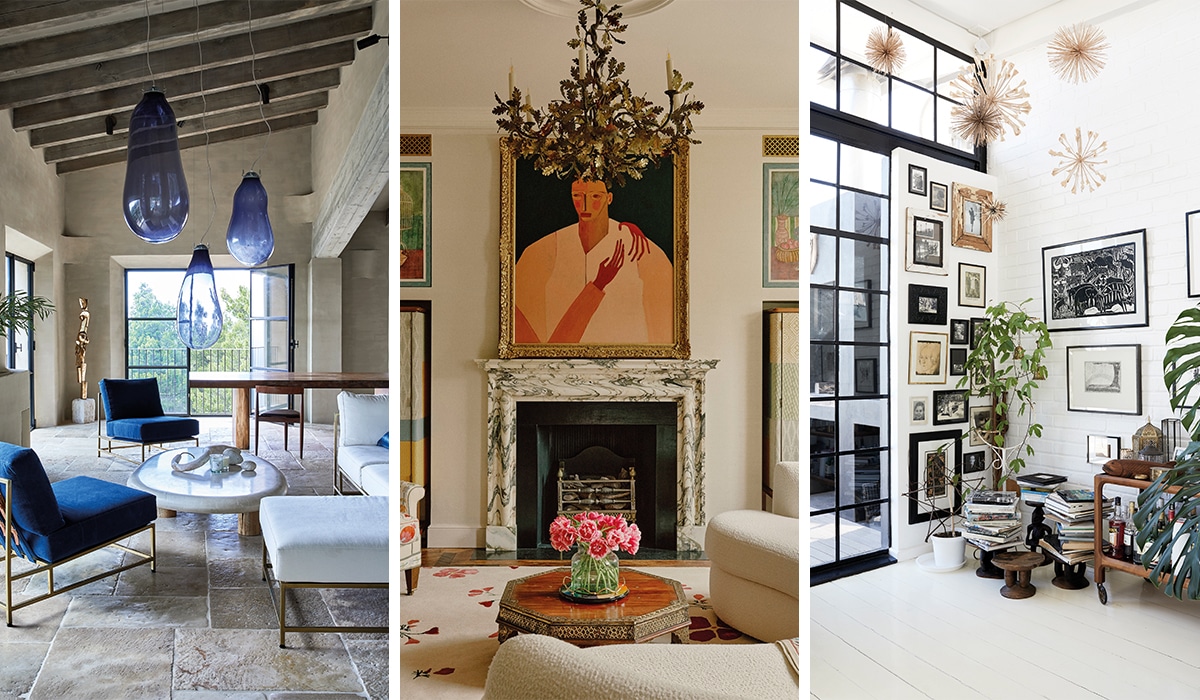
Old-school cool
Whether it’s mid-century inspired pieces or real-deal Art Deco finds, retro and vintage styles continue to charm. This doesn’t mean you have to kit out a room top to bottom in period pieces, though. It’s a really versatile look that can be adapted to suit any home. It can be particularly striking to have a sleek, modern room with a statement vintage light fitting.
Chandeliers in all shapes and sizes are a good choice if you want a centrepiece. Beautiful Murano glass (if you can afford it!) or pieces inspired by it add one-of-a-kind interest. Old styles re-imagined in new materials are also a hot choice right now – burnished gold wall sconces are particularly popular with designers.
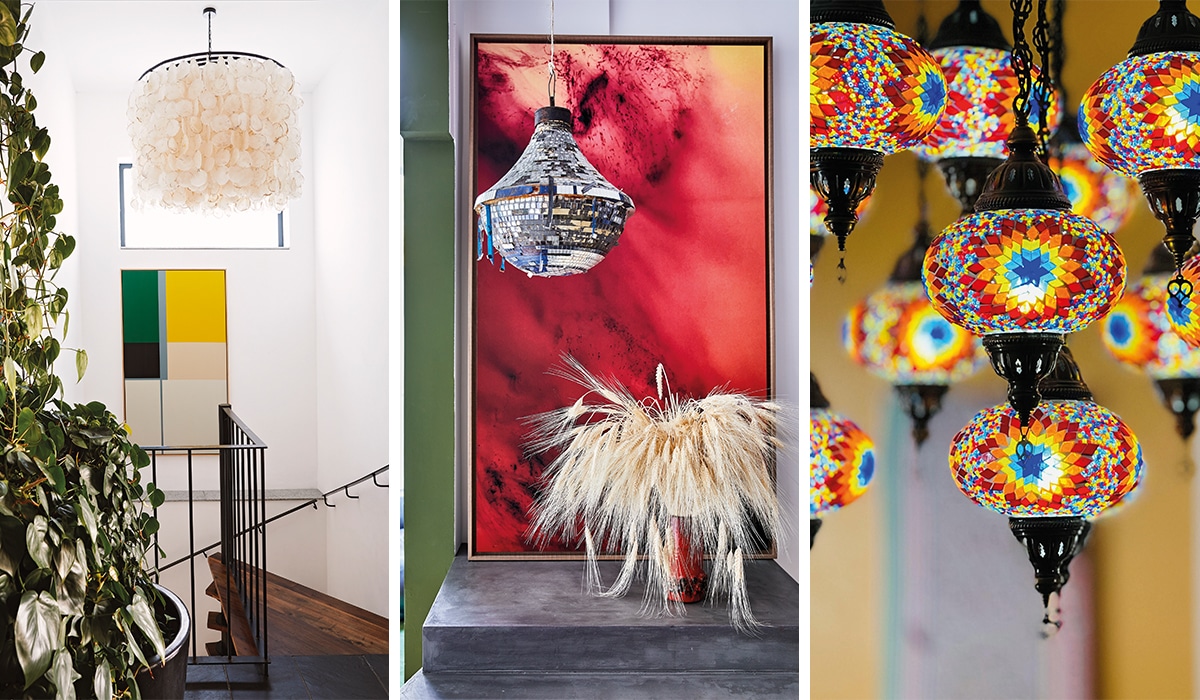
More mosaics
A lot of modern design is based on straight lines and 90-degree angles. However, studies show that our brains seek out the repeating patterns (called fractals) found in natural objects such as branching trees or flowers made up of many tiny clusters.
Light that mimics these patterns can be stress reducing. To imitate this element of nature, select an intricately cut-out Moroccan brass lantern or a colourful Turkish mosaic lamp that casts a diffused glow. These intricate handcrafted pieces can provide a stunning accent in an otherwise minimalist space. If you are after something modern, laser-cut metal lamp shades and standing lamps will also cast a mesmerising patterned light.
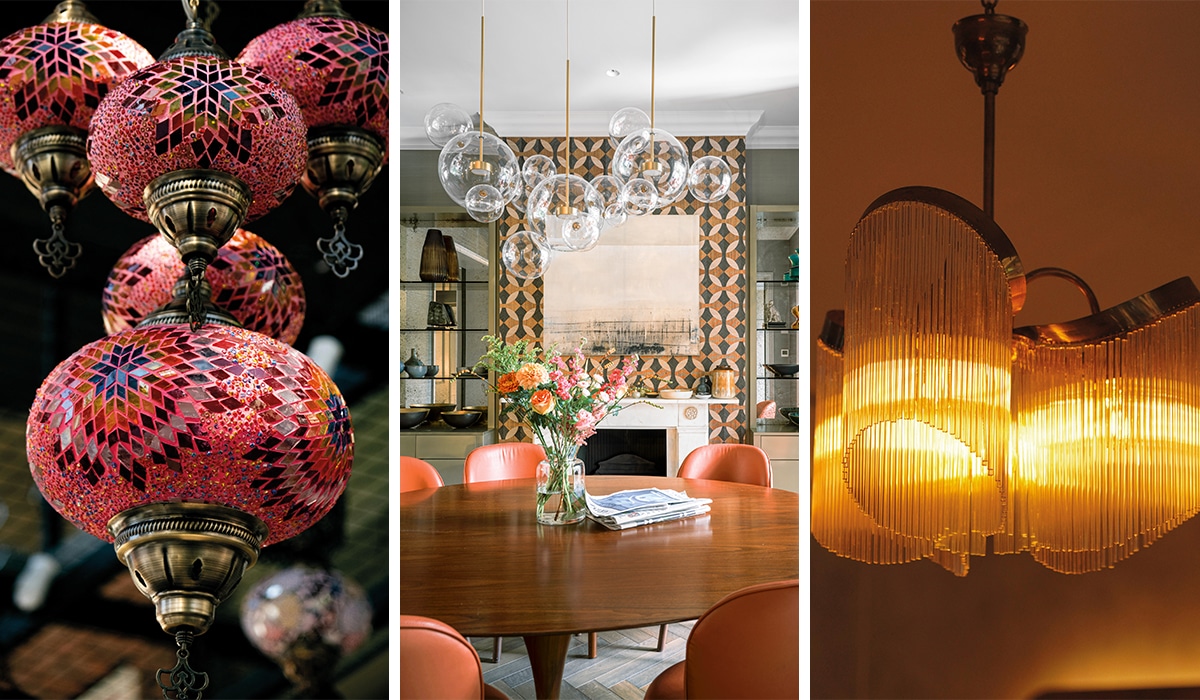
Crystal balls
A bold light fitting is a great way to create a statement and can be an artwork in its own right. Recent design trends express this in the form of magnificent chandeliers and architectural pendant lights that stand out at the heart of any space. Now, the spotlight is on large glass balls.
These can be fairly subtle and sophisticated (perhaps muted blues and greys on plain pendant fittings) or colourful and playful (one large orb in a bold hue or a cluster of colourful balloons). Think of them as the new Edison bulbs, suitable for forming striking rows of single lights when you want to create a repeat or illuminate a large area.
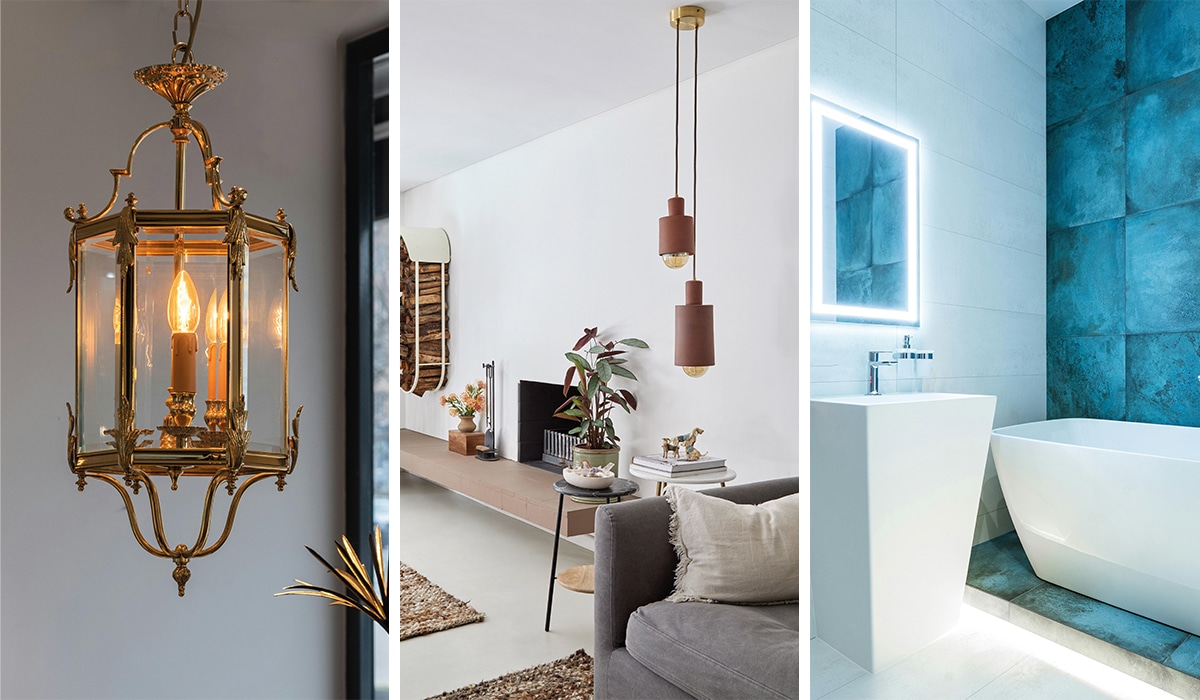
Layered lighting
Ensure you have a good overhead light that will illuminate most of the room, but don’t stop there. Think about whether you want white or yellow light bulbs: White light is energising and can be a good choice in an office but may be overwhelming in a living space. Yellow light is softer and warmer, more suitable if you want to create a cosy ambience in a bedroom or living room. Then start adding task lighting. If you tend to sit in a particular armchair to read, add a lamp to illuminate your book. If you spend a lot of time in the kitchen, consider extra spotlights or under-cupboard strips so that you can see what you are chopping. And don’t be afraid to add lamps – everywhere! They are multifunctional: decorative, portable and practical, even in unexpected spots such as the kitchen or bathroom.
Get smart
Where would we be without smart technology? Not just limited to our televisions and our watches, smart technology is also coming for our lighting. There are many ways to utilise the latest artificial intelligence within your home. Perhaps you want to use your phone as a remote control to adjust the lights without getting off the couch, or switch on the lamps when you’re out late? How about adjusting the strength and colour of the light according to your mood? Smart lighting is also a great way to incorporate energy-efficient innovations. OLED lights use less power than LEDs and are made from carbon-based organic materials. They also have less glare, more closely resembling soft natural light. You could also opt for motion sensors that only switch on the lights when you’re in a room, saving on electricity. The more you are able to incorporate smart technology into your home, the more sustainable your home can become – all with the touch of a button.
By Amy Lehner
Photographs: Bureaux, Pexels



